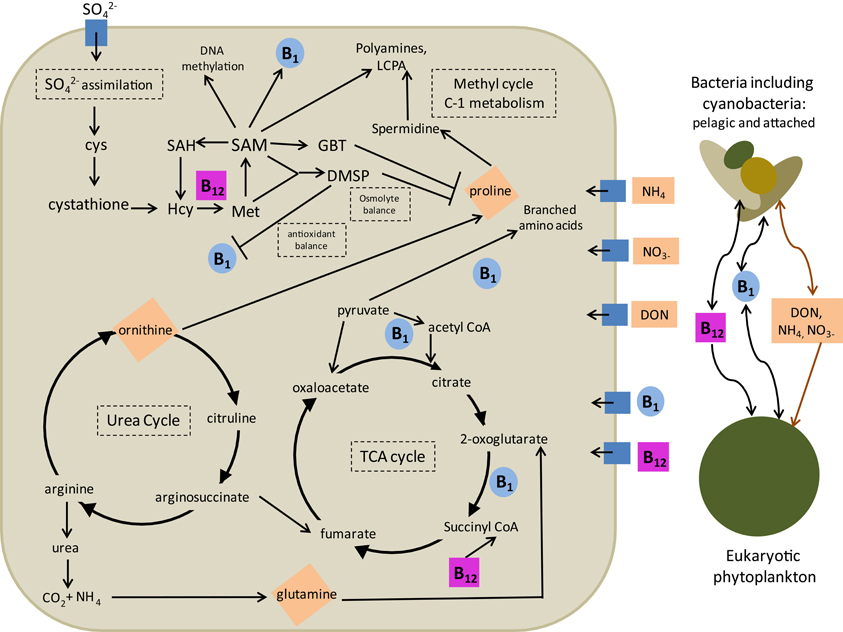futuritycarpaccio
Guest
- Messages
- 211
I will then consolidate all the ideas I've been having here... My own conclusions are in orange and at the end. Everything else has the references to scientific articles or wiki. let me know if you find something wrong or don't agree.
Finasteride Metabolism
Finasteride's metabolism is hepatic. It's metabolites are excreted through feces (39%) and urine (57%). [1]
In Phase I of liver detoxification, finasteride is primarily metabolised through CYP3A4, through Oxidative Metabolism, into:
- Hydroxy-Finasteride, which isn't found in Plasma bile or urine [2]
- Carboxy Finasteride~oic finasteride, which is then found in Plasma, Bile and Urine. [2]
In Phase II
Hydroxy Finasteride is metabolised into Omega-Hydroxy-Finasteride [3] through Gluthatione S Transferase Omega 1 (GSTO1 gene).
Carboxy Finasteride, which is +- oic finasteride, is then metabolised into Omega-oic-Finasteride [3] through Gluthatione S Transferase Omega 1 (GSTO1 gene).
Glucuronidation:
In Vitro, Omega-Hydroxy-Finasteride is metabolised into omega-hydroxy-finasteride-glucunoride, by UGT1A4. This metabolite was not detected in vivo. [3]
In vivo, omega-oic-finasteride is transformed in omega-oic-finasteride glucuronide and was found in the bile of a few individuals. [3]
Other metabolites
In vitro, but also in urine and bile, 2 other Hydroxy Finasteride compounds were identified. [3]
-----------------
CYP, UGT and Finasteride
Finasteride is primarily detoxified through CYP3A4.[1]
However, finasteride can also be an inhibitor of CYP3A4 [4]:
- Finasteride's Ki for 5Beta Reductase is less than an order of magnitude higher than that for 5Alpha Reductase I [4]. Finasteride inhibits 5AR II = 10nM Ki, 5AR I = 300nM, 5breductase AK1RD1 = 2100nM.
- Finasteride's acts upon 5beta reductase as a competitive inhibitor, not a mechanical based inactivator (irreversible enzyme inhibitor).[4]
- 5beta reductase is involved in bile acid synthesis. [4]
- 5beta reductase is responsible for generating 5beta-pregnanes,which are natural ligands for the pregnane-X receptor (PXR) in the liver. 4]
- PXR is involved in the induction of CYP3A4. [4]
This means that high dosage of finasteride might inhibit CYP3A4, which means that finasteride might prevent its own metabolism [4], thus promoting drug accumulation.
Inhibition of hepatic UGT isozymes by finasteride has not been explored before 2014. In vitro, of the seven hepatic UGTs, finasteride potently and selectively inhibited UGT1A4, finasteride did not inhibit hepatic UGT1A1, 1A3, 1A6, 1A9, 2B7, and 2B15 activities. However, the C max of finasteride in patients is much lower than K i of finasteride for UGT1A4, finasteride is unlikely to cause clinically significant drug–drug interactions via UGTs inhibition. [5]
However, Cmax of finasteride seems to be able to change based on other factors. [6]
In this case
That could mean there is a metabolite of finasteride that is detoxified by another CYP enzyme, or UGT enzyme, that terazosin either induces or inhibits. This could mean there is a method of detoxification of finasteride that has not been yet identified. It could be a metabolite that has not been yet identified and uses enzymes other than UGT1A3 or CYP3A4.
-------
Conclusion
Genetic polymorphisms in the detoxification elements of the liver, unique to each person, promoted accumulation of high dosages of the drug. This in turn lead to all sorts of problems, some of which are not identified yet.
I think we have a genetic predesposition, be it through methylation blocks, reduced amounts of CYP3A4, UGT1A3, or other enzymes necessary by the metabolites, which were already present or that were latent and were then triggered by the hormonal changes imposed by finasteride. This induced enough drug accumulation that finasteride started inhibiting CYP3A4, preventing it's metabolism and promoting huge quantities of the drug in the liver. This had lead to the following:
-> Bile acid synthesis problems
-> Liver endoplasmatic reticulum stress
-> Hepatotoxicity
-> Leyidig Cell hyperplasia and adenomas [7]
-> others unidentified
And to it's consequences:
- Liver problems (bile acid problems, liver endoreticulum stress) could be accountable for low vitamin d, high cholesterol, problems with glucuronidation, endoplasmatic reticulum stress, low 3adiolG, digestion issues, high crp, adrenal problems, malabsorption of nutrients and minerals, pancreatitis...
- Endoreticulum Stress may have triggered Dolichol Deprivation, as outlined by TryingNotToWorry [8], or could be the other way around.
In rats, finasteride was randomly associated with Leydig Cell hyperplasia and adenomas, as outlined by Vicentv in PropeciaHelp.[7]
The fact that in the mitotane study, the person doesn't get back the full amount of the CYP3A4 activity, probably could be further indicative of an epigenetic change in that enzyme's activity. [9]
[1] http://en.wikipedia.org/wiki/Finasteride
[2] http://www.diva-portal.org/smash/record.jsf?pid=diva2:174003&dswid=-4682
[3] http://www.researchgate.net/publica...Liquid_ChromatographyTandem_Mass_Spectrometry
[4] http://www.ncbi.nlm.nih.gov/pmc/articles/PMC2740403/
[5] http://www.ncbi.nlm.nih.gov/pubmed/25448279
[6] http://www.ncbi.nlm.nih.gov/pubmed/9824790
[7] http://www.ncbi.nlm.nih.gov/pubmed/8005373
[8] http://propeciahelp.com/forum/viewtopic.php?f=27&t=4892
[9] http://press.endocrine.org/doi/full/10.1210/jc.2012-2851
Finasteride Metabolism
Finasteride's metabolism is hepatic. It's metabolites are excreted through feces (39%) and urine (57%). [1]
In Phase I of liver detoxification, finasteride is primarily metabolised through CYP3A4, through Oxidative Metabolism, into:
- Hydroxy-Finasteride, which isn't found in Plasma bile or urine [2]
- Carboxy Finasteride~oic finasteride, which is then found in Plasma, Bile and Urine. [2]
In Phase II
Hydroxy Finasteride is metabolised into Omega-Hydroxy-Finasteride [3] through Gluthatione S Transferase Omega 1 (GSTO1 gene).
Carboxy Finasteride, which is +- oic finasteride, is then metabolised into Omega-oic-Finasteride [3] through Gluthatione S Transferase Omega 1 (GSTO1 gene).
Glucuronidation:
In Vitro, Omega-Hydroxy-Finasteride is metabolised into omega-hydroxy-finasteride-glucunoride, by UGT1A4. This metabolite was not detected in vivo. [3]
In vivo, omega-oic-finasteride is transformed in omega-oic-finasteride glucuronide and was found in the bile of a few individuals. [3]
Other metabolites
In vitro, but also in urine and bile, 2 other Hydroxy Finasteride compounds were identified. [3]
-----------------
CYP, UGT and Finasteride
Finasteride is primarily detoxified through CYP3A4.[1]
However, finasteride can also be an inhibitor of CYP3A4 [4]:
- Finasteride's Ki for 5Beta Reductase is less than an order of magnitude higher than that for 5Alpha Reductase I [4]. Finasteride inhibits 5AR II = 10nM Ki, 5AR I = 300nM, 5breductase AK1RD1 = 2100nM.
- Finasteride's acts upon 5beta reductase as a competitive inhibitor, not a mechanical based inactivator (irreversible enzyme inhibitor).[4]
- 5beta reductase is involved in bile acid synthesis. [4]
- 5beta reductase is responsible for generating 5beta-pregnanes,which are natural ligands for the pregnane-X receptor (PXR) in the liver. 4]
- PXR is involved in the induction of CYP3A4. [4]
This means that high dosage of finasteride might inhibit CYP3A4, which means that finasteride might prevent its own metabolism [4], thus promoting drug accumulation.
Inhibition of hepatic UGT isozymes by finasteride has not been explored before 2014. In vitro, of the seven hepatic UGTs, finasteride potently and selectively inhibited UGT1A4, finasteride did not inhibit hepatic UGT1A1, 1A3, 1A6, 1A9, 2B7, and 2B15 activities. However, the C max of finasteride in patients is much lower than K i of finasteride for UGT1A4, finasteride is unlikely to cause clinically significant drug–drug interactions via UGTs inhibition. [5]
However, Cmax of finasteride seems to be able to change based on other factors. [6]
In this case
. Even though finasteride and terazosin are not substrates for the same enzyme (CYP3A4).Cmax and AUC0-24 of finasteride were significantly higher after coadministration with terazosin.
That could mean there is a metabolite of finasteride that is detoxified by another CYP enzyme, or UGT enzyme, that terazosin either induces or inhibits. This could mean there is a method of detoxification of finasteride that has not been yet identified. It could be a metabolite that has not been yet identified and uses enzymes other than UGT1A3 or CYP3A4.
-------
Conclusion
Genetic polymorphisms in the detoxification elements of the liver, unique to each person, promoted accumulation of high dosages of the drug. This in turn lead to all sorts of problems, some of which are not identified yet.
I think we have a genetic predesposition, be it through methylation blocks, reduced amounts of CYP3A4, UGT1A3, or other enzymes necessary by the metabolites, which were already present or that were latent and were then triggered by the hormonal changes imposed by finasteride. This induced enough drug accumulation that finasteride started inhibiting CYP3A4, preventing it's metabolism and promoting huge quantities of the drug in the liver. This had lead to the following:
-> Bile acid synthesis problems
-> Liver endoplasmatic reticulum stress
-> Hepatotoxicity
-> Leyidig Cell hyperplasia and adenomas [7]
-> others unidentified
And to it's consequences:
- Liver problems (bile acid problems, liver endoreticulum stress) could be accountable for low vitamin d, high cholesterol, problems with glucuronidation, endoplasmatic reticulum stress, low 3adiolG, digestion issues, high crp, adrenal problems, malabsorption of nutrients and minerals, pancreatitis...
- Endoreticulum Stress may have triggered Dolichol Deprivation, as outlined by TryingNotToWorry [8], or could be the other way around.
In rats, finasteride was randomly associated with Leydig Cell hyperplasia and adenomas, as outlined by Vicentv in PropeciaHelp.[7]
The fact that in the mitotane study, the person doesn't get back the full amount of the CYP3A4 activity, probably could be further indicative of an epigenetic change in that enzyme's activity. [9]
[1] http://en.wikipedia.org/wiki/Finasteride
[2] http://www.diva-portal.org/smash/record.jsf?pid=diva2:174003&dswid=-4682
[3] http://www.researchgate.net/publica...Liquid_ChromatographyTandem_Mass_Spectrometry
[4] http://www.ncbi.nlm.nih.gov/pmc/articles/PMC2740403/
[5] http://www.ncbi.nlm.nih.gov/pubmed/25448279
[6] http://www.ncbi.nlm.nih.gov/pubmed/9824790
[7] http://www.ncbi.nlm.nih.gov/pubmed/8005373
[8] http://propeciahelp.com/forum/viewtopic.php?f=27&t=4892
[9] http://press.endocrine.org/doi/full/10.1210/jc.2012-2851




